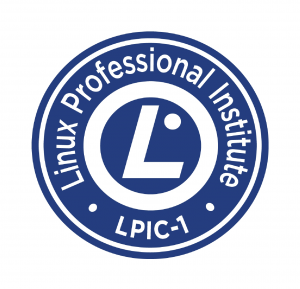You mean they’re still publishing books? And on Linux administration of all things?
When you consider just how inefficient books are at delivering knowledge when compared to digital networks, and when you consider just how many first rate and freely accessible how-to guides already exist out there, you’ve got to wonder why a guy like me would spend time writing a book. More than that, I would argue that there aren’t too many topics with more free documentation than Linux administration. Standing at the head of the Free and Open Source Software (FOSS) movement, the operating system is steeped in a culture that has always highly valued sharing, mentoring, and community.
So why did I do it? What possessed me to write a book guiding readers through their preparations for the LPIC-1 Linux Server Professional certification exams? </shameless_plug>
Well, first of all, it turns out that the book industry isn’t quite dead yet. A well written technical book on a particularly popular subject can still sell more than ten thousand copies, and that means there are still thousands of people who prefer to get the information they need the old fashioned way. And the fact that there are still more than a few active technical publishers, each putting out dozens of titles a year, suggests that there’s a healthy and diverse market.
But why should people spend money for material that’s mostly available free online? I think part of the answer is that not everyone is able or willing to do the digging it might take to get all of the answers they need through search engines and online forums. But it’s also about how each individual approaches learning. If, for instance, you absorb difficult technical information better when it’s well organized, then it may be worth it for you to spend a few bucks and take advantage of someone else’s research and organization. In the larger scheme of things, the cost of the book might be repaid many times over by the time and effort you save.
But, even so, you’ll have to be careful not to rely too heavily on the work of others. A million years ago (or so), when I was a high school teacher, I sometimes wondered if I wasn’t “too good” at what I did. What I meant was that if the way I presented the material to my students was too clear, I might be leaving them with nothing to do. Or, in other words, there may be no incentive for them to engage with the material in any active way. If students become nothing more than an audience, then they’re not really learning.
In such moments, I would simply stop talking and throw the ball back in their laps: “you figure out where this lesson was going and finish it yourselves.”
The case for book-based Linux training
 That’s how I wrote my LPIC-1 book. All the exam objectives are covered and I don’t believe there’s a single question that’s not addressed but, unless you’ve got a photographic memory, you won’t possibly be able to master the material by just reading it. You’ll need to open up a Linux command line terminal and try everything out for yourself. You’ll need to make mistakes, spend frustrating hours digging yourself out, and then doing it one or two more times the right way. And you’ll need to attempt your own projects – perhaps following the suggested projects I included at the end of each chapter or, even better, things you need and want to do.
That’s how I wrote my LPIC-1 book. All the exam objectives are covered and I don’t believe there’s a single question that’s not addressed but, unless you’ve got a photographic memory, you won’t possibly be able to master the material by just reading it. You’ll need to open up a Linux command line terminal and try everything out for yourself. You’ll need to make mistakes, spend frustrating hours digging yourself out, and then doing it one or two more times the right way. And you’ll need to attempt your own projects – perhaps following the suggested projects I included at the end of each chapter or, even better, things you need and want to do.
To learn something, you need skin in the game.
That’s why Bootstrap IT’s motto is “Teach yourself…” And that’s why I think that this book – even though it’s less than a third the length of its competitors – might just have more value.